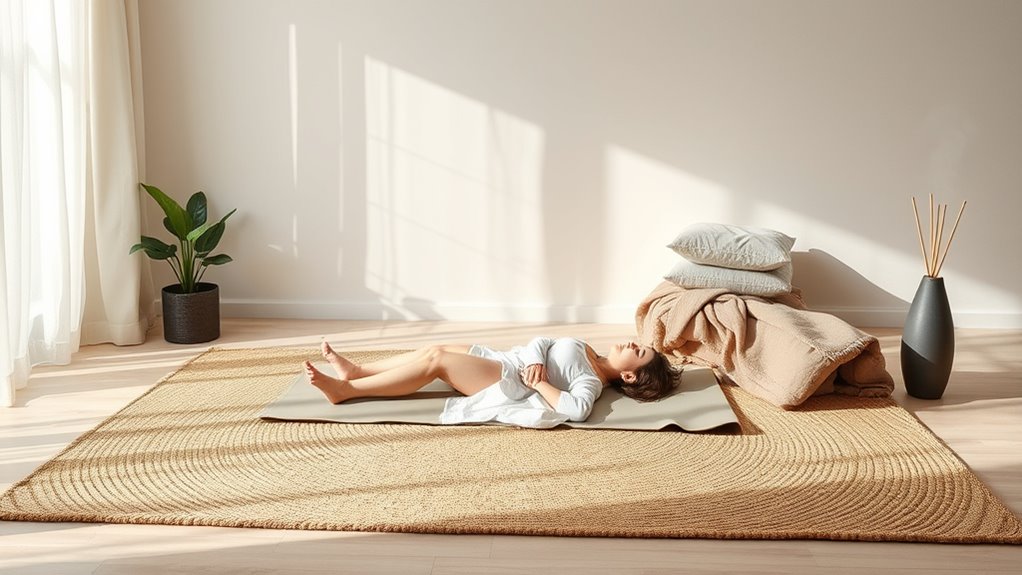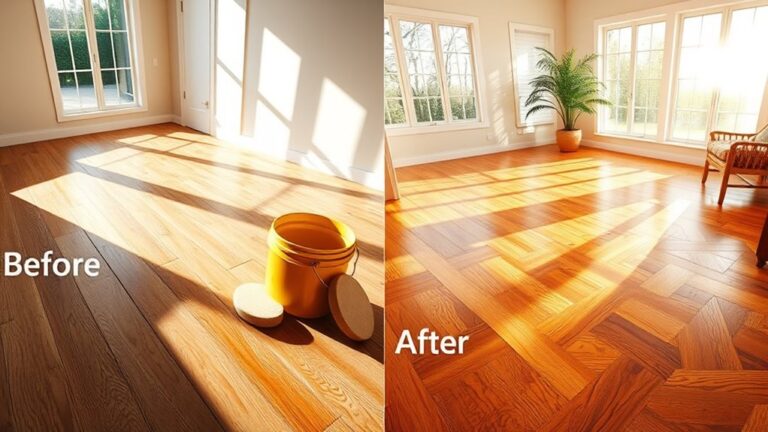Sleeping on the floor isn’t inherently bad for you and can improve spinal alignment and sleep quality when done correctly. To do it safely, start gradually with a thin mat or firm cushion, guarantee your sleeping surface is clean, and use natural materials for support. Pay attention to how your body feels, especially if you have joint issues. With the right approach, floor sleeping can be a healthy choice. Let’s explore how to make this shift comfortable and effective.
Benefits of Sleeping on the Floor
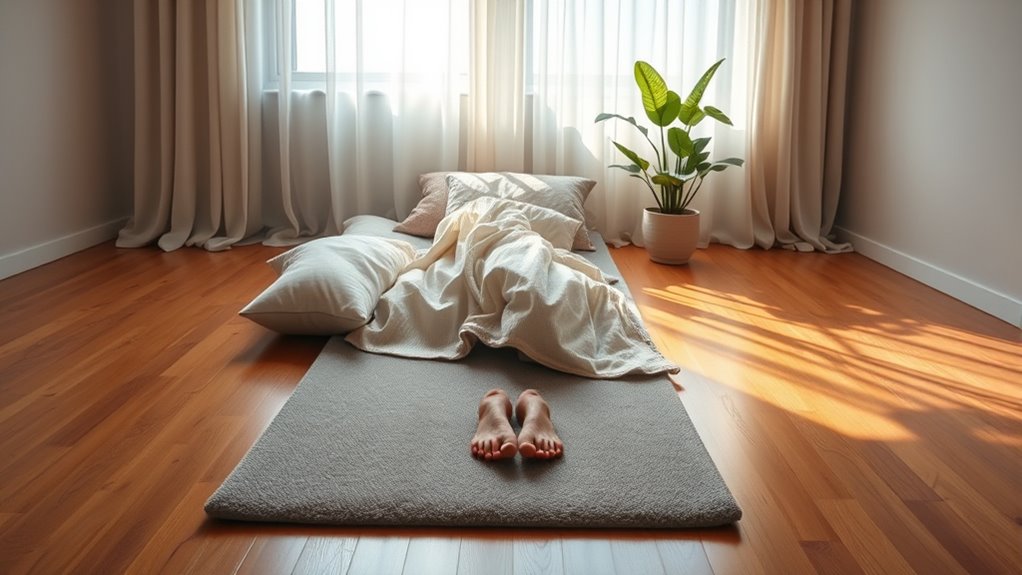
Although it might seem uncomfortable at first, sleeping on the floor can offer several notable benefits backed by research. One key floor benefit is improved body alignment. When you lie on a firmer surface, your spine tends to maintain its natural curve, reducing the risk of misalignment that often occurs on overly soft mattresses. This can alleviate pressure points and promote better posture during sleep. Additionally, sleeping on the floor may enhance circulation and decrease muscle tension, supporting overall musculoskeletal health. For those seeking freedom from conventional bedding constraints, this practice encourages a more grounded, mindful approach to rest. By embracing floor sleeping thoughtfully, you can experience a natural, evidence-based way to support your body’s structural integrity and enjoy restorative sleep.
Potential Risks and Discomforts
While sleeping on the floor can offer alignment and circulation benefits, it’s important to recognize that this practice isn’t suitable for everyone. You might experience potential health impacts such as increased joint stiffness, pressure points, or exacerbation of pre-existing conditions like arthritis or sciatica. Additionally, the hard surface can cause initial discomfort, making it challenging to fall or stay asleep. However, discomfort mitigation strategies—like using a thin mat or adjusting your sleeping position—can help ease these issues. It’s vital to listen to your body and adapt accordingly. If you notice persistent pain or worsening symptoms, reconsider this habit. Prioritizing your well-being while exploring floor sleeping guarantees you maintain your freedom without compromising your health.
Ideal Conditions for Floor Sleeping
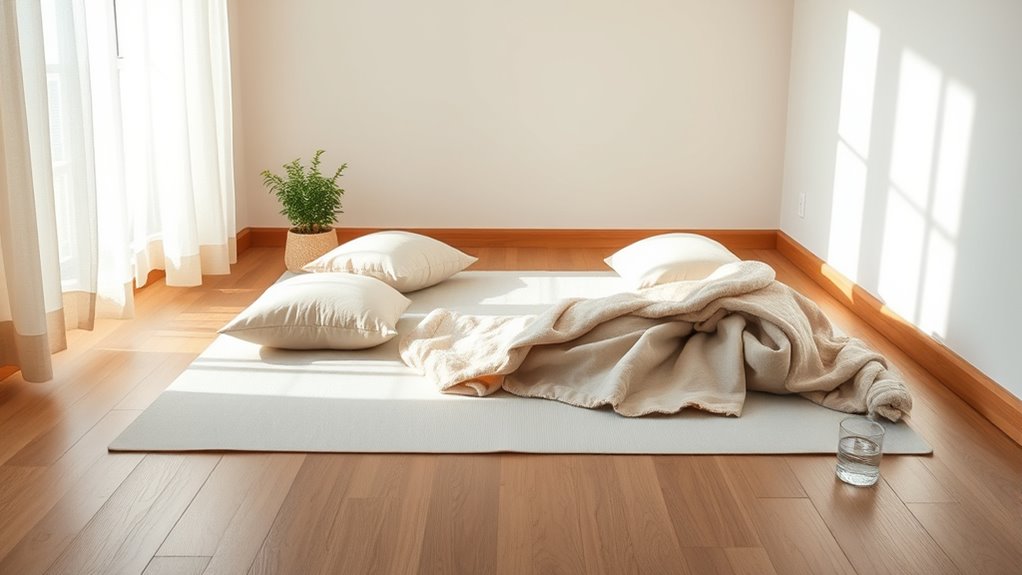
Three key factors determine whether floor sleeping will be comfortable and beneficial for you: surface firmness, cleanliness, and temperature control. Choosing a firm surface supports proper body alignment, which is crucial for preventing aches and promoting spinal health. However, the floor itself can be cold and hard, so incorporating adequate floor insulation—like a thin mat or natural fiber rug—helps maintain warmth and cushions pressure points without compromising firmness. Cleanliness is essential to avoid allergens and irritants that could disrupt your rest, so regularly vacuum and sanitize your sleeping area. Finally, controlling temperature guarantees you’re neither too hot nor too cold, preserving comfort throughout the night. By optimizing these conditions, you’ll create a safe, liberating sleep environment that honors your body’s needs and enhances your well-being.
How to Transition Gradually to Floor Sleeping
If you’re considering floor sleeping, easing into it gradually is essential to let your body adapt without discomfort or injury. Start by incorporating mattress alternatives like thin mats or firm cushions to support your sleep posture. Adjusting incrementally helps your muscles and joints acclimate, reducing soreness.
| Step | Action |
|---|---|
| Week 1-2 | Use a thin mattress alternative; maintain your usual sleep posture. |
| Week 3-4 | Lower mattress thickness; focus on natural spinal alignment. |
| Week 5+ | Sleep directly on the floor; adjust sleep posture as needed for comfort. |
Transitioning like this respects your body’s signals while fostering freedom from conventional bedding constraints.
Choosing the Right Materials and Support
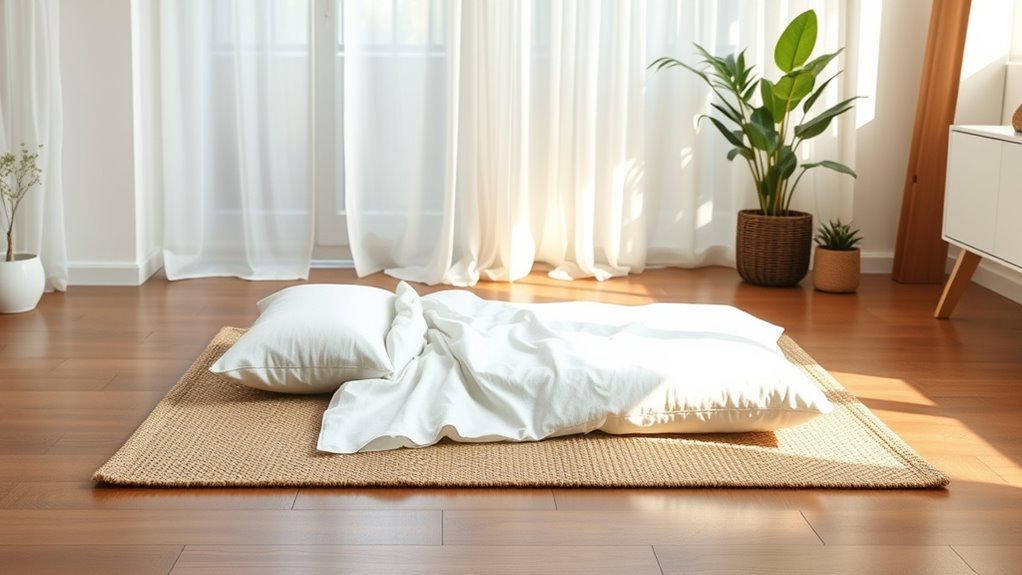
Because your body needs proper support even without a traditional mattress, choosing the right materials is essential when sleeping on the floor. You want floor padding that cushions pressure points without sacrificing spinal alignment. Natural materials like cotton, wool, or latex offer breathable, durable support, reducing the risk of discomfort and promoting healthier sleep posture. Avoid synthetic foams that can trap heat and cause skin irritation. Remember, the goal is to balance firmness and softness—too hard, and you risk soreness; too soft, and your body won’t get the support it needs. Selecting quality natural floor padding not only enhances comfort but also aligns with your desire for a more grounded, freeing sleep experience. Prioritize materials that support both your body and well-being.

